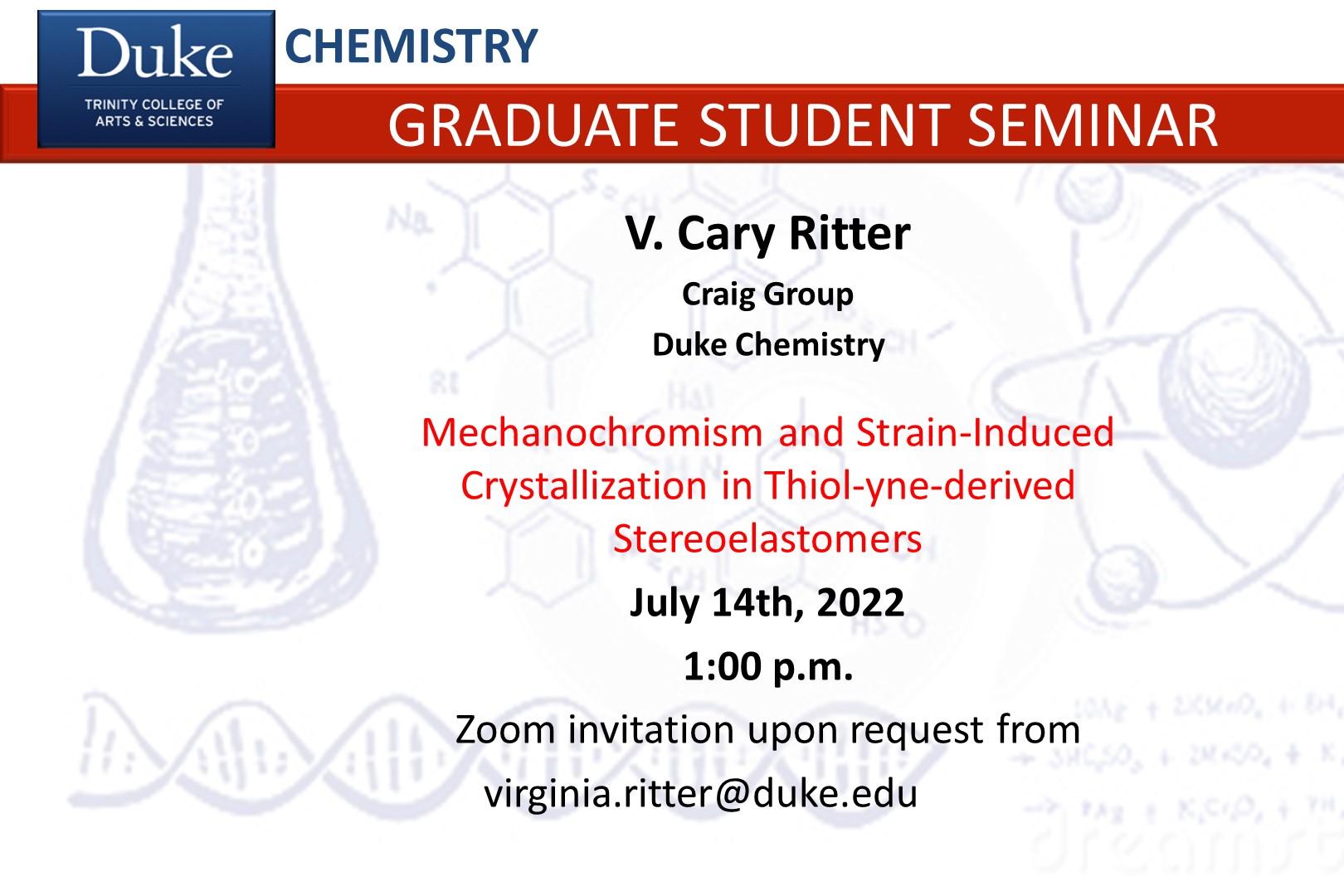
Speaker:
V. Cary Ritter, Ph.D. Candidate
Ph.D. Defense
Stephen Craig, Ph.D, Advisor
Abstract:Most elastomers undergo strain-induced crystallization (SIC) under tension; as individual chains are held rigidly in a fixed position by an applied strain, their alignment along the strain field results in a shift from strain-hardening (SH) to SIC, a sub-type of SH. A similar degree of stretching is associated with covalent mechanochemical responses, raising the possibility of an interplay between the macroscopic response of SIC, and the molecular response of mechanophore activation. Here we report thiol-yne-derived stereoelastomers, doped covalently with a dipropiolate-derivatized spiropyran (SP) mechanophore. Material properties of SP-containing films are consistent with undoped controls, indicating that the SP behaves as a reporter of the mechanical state of the nascent polymer. Uniaxial tensile tests reveal correlations between mechanochromism, SH, and SIC, which are each strain rate-dependent. When mechanochromic films are stretched slowly to the point of mechanophore activation, the covalently-tethered mechanophore remains trapped in a force-activated state, even after the applied stress is removed; additionally, the kinetics of mechanophore reversion correlate highly with the extent of SIC. Because these elastomers are not cross-linked, they are recyclable by melt-pressing into new films, which increases their potential range of strain-sensing and shape-memory applications.